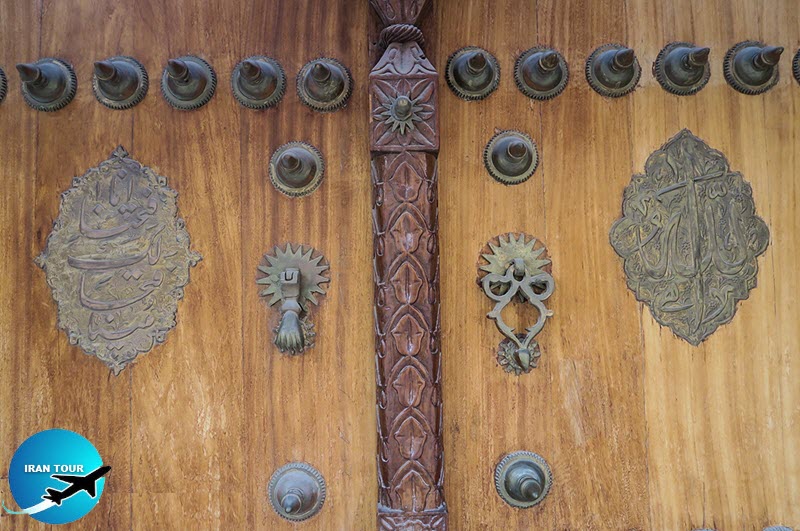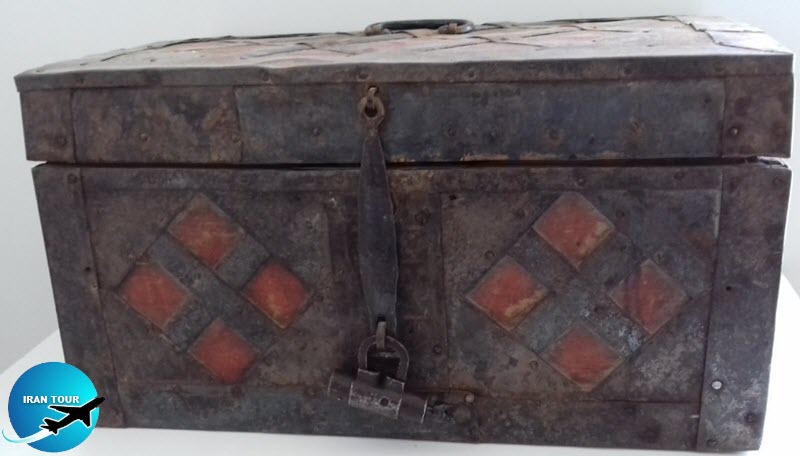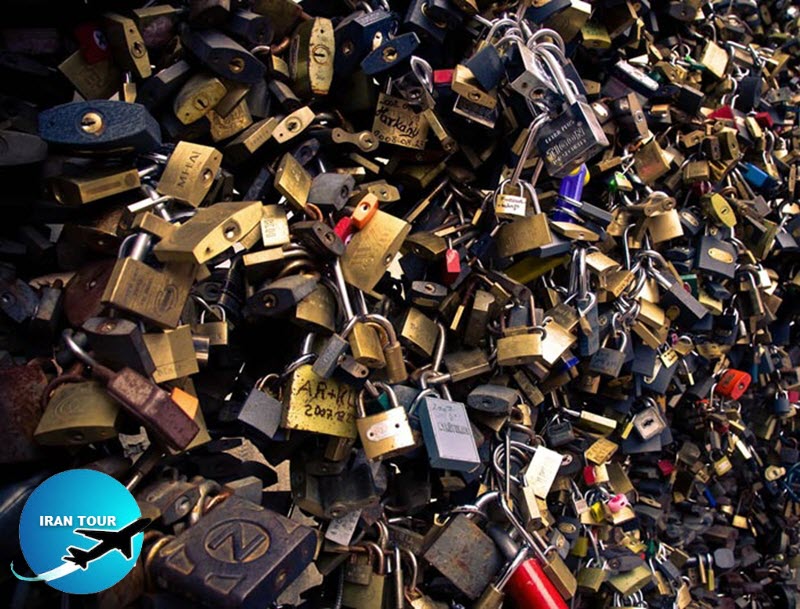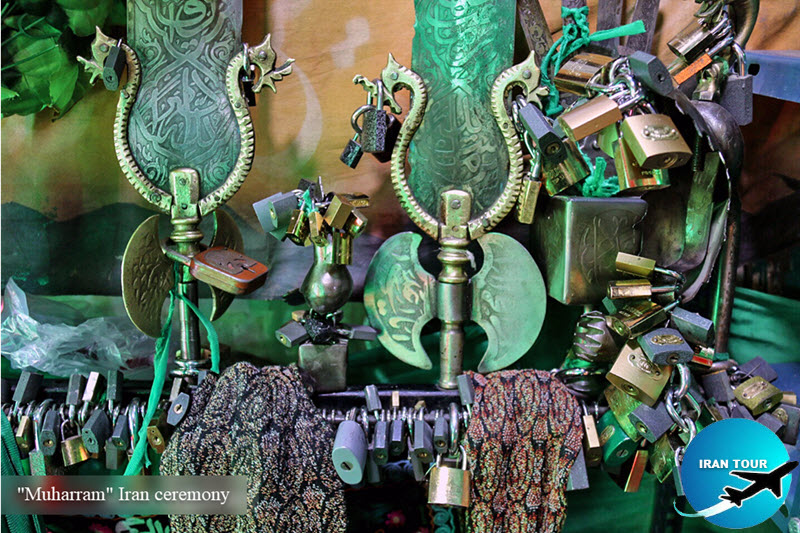Copyright 2020 - 2021 irantour.tours all right reserved
Designed by Behsazanhost
Padlock and padlock industry in Iranian Traditional Culture
Padlock and padlock industry in Iranian Traditional Culture
By: Parviz Tanavoli
Safety and Guarding are the main reasons to produce padlocks. In history whenever a building was made by men surely there would be a door or a box that demands a padlock. So there would be a good variety of door padlocks and box padlocks and in Iran, the same routine continued and padlocks were one of the most important features related to concepts of safety and security. The door of a house, a shop, a caravanserai, or the gate of a city, there would be a padlock for each of them.
As a matter of fact, everyone who is familiar with Iran's padlock industry would be interested in their types of use. With the exception of talismanic and iconographic padlocks, most of the padlocks had security purposes usually used for the doors of houses, malls, or boxes.
 |
while just two simple wainscots would be usually used by the poor. All the entrance doors had two wainscots, a cyclic and light one for women and a heavy and Solid one for men. So the people inside the house would be aware of the stranger's gender that was knocking on the door out there and if the sound would related to a man, they would wear a scarf to open up the door. Rustic people would often live! in the castles with huge and heavy gates and tent nails on. Inside the castle, the rustic house would appear and each of them had a single door. Each of the houses had one or two rooms without doors and just separated by curtains or carpets. In contrast, most of the urban house's rooms featured doors, padlocks, and a chain hanging above the doors. Also, padlocks were used for boxes and cases. Most of the boxes were made of wood and decorated with lots of different motifs.
 |
In the past years, each house had a closet and inside the closet, some boxes were kept. The boxes were used for keeping all the clothes, curtains, nuts, etc. People, who had no closet, would put a box instead to decorate their houses. Finding some metal wainscots with key holders refers back to the usage of built-in padlocks by Iranian people in the last years. Also, there was a type of little box called Sandoghcheh. With a noticeable variation, the one which was specialized for the wedding was the best-designed
Talismanic and iconographic padlocks in the folkloric belief
In the Iranian cultural beliefs,
Holy shrines, Mosque, Drinking fountain
For most of the people being in a religious place have two aspects; showing respects and demanding a wish to come true. In the holy shrine of Imams (Peace Be Upon Them) and their family members, there is a tomb or netted window (Zarih) that reaching to it is the first step to the wishes to come true. With this clutching into the netted window of the tomb and sticking heads and faces to the tomb and crying, they believe that they would reach to their wills. During all of these actions, the people would hold the padlock in their hands for the closest position to the holy Imam. Made from metal and silver, these padlocks have healing effects for patients. Except for the padlocks, ribbons and cotton ropes would be hanging everywhere on the netted window of the tomb. Most of the pilgrims would tie their clothes instead of padlocks to the netted window and in expression, they would tie a Dakhil to the window. For this intention, the green ribbons are for
These kinds of trees that usually grow on the lope of a mountain or in a desert would be noticed as a holy object after they would be seen in a night dreaming of a respectful believer and people would pray knotting ribbons into its branches. Mosques and drinking fountains are two other places conceptually related to padlocks. Although a mosque has no netted window there is a chain on the top of the mosque's entrance door that sometimes would be used by pilgrims. The function of the chain that would be called expansion chain or graph chain originally is to ascertain the borderline between outside and the mosque. But there would be lots of examples for the situation that people have tied their vowed padlocks to the chain. Emad-o-
 |
Drinking fountain actually is a place for presenting drinkable water and usually would be installed on a shelf of a wall of a crowded passageway. In the Drinking fountains, we would be often confronted with a symbolic metal hand; a separated hand of
Moharam Martyrdom, Allam, Nakhl, Mourners, the Padlock Locker
Most of the Moharam martyrdom customs would be executed in the first 10 days of the month. On the 10th day of Muharram, Ashura, we would confront the peak of this mourning. The mourners (who show their profound grief and sorrow by beating their breasts with their hands and their shoulders with chains) would move on foot from mosque to mosque in the streets carrying a good number of religious sings while mourning. Every regional place would have a separated and independent group and sign for itself; these groups of mourners would finally gather together in the center of the city. Watching the mournful crowd carrying several religious signs that would be decorated with green, red and black clothes and colorful feathers would impress everyone's feelings. In some regional places near a desert, a small pavilion, representing Imam Hussein's (PBUH) pavilion or holy shrine, would be accompanied with a large wooden sign that would a symbol of his dead children. This sign moves al toward the crowd. Nakhl is the other feature would be made from wood and is a cypress-shaped icon with a structure like a netted window. The poor would tie a piece of cloth to it (Figure 1). After the ending of the mourning, the signs and Kotal be brought back to the mosques or the original places and they would keep them in a special place The signs that would be exposed to the eyes of the beholders are believed to have healing impressions (Figure 5).
 |
Date-palm would do the same function in Yazd and the villages around the city because of their netted window shape. In addition to the groups of breast-beaters and chain-beaters, there would be some groups that would experience
Captivity
The other meaning and the function of a padlock is captivity. From the time, mankind began to fight when quarrel and violations spread on the earth, enemy's captivation and the padlocks consequently would be the next steps to finalize the process. The captivated man just like a prisoner was one of his/ her owner possessions and padlocks were the basic equipment for preventing the escaping issue, Padlock and chains were not only used for prisoners or captivated persons but also includes criminals. This custom was commonplace until Mashruteh era in Iran began. One of the captivity padlocks samples that usually would be used for the horses and the mules is famous to "Najv".
- Details
- Category: IRAN Blog